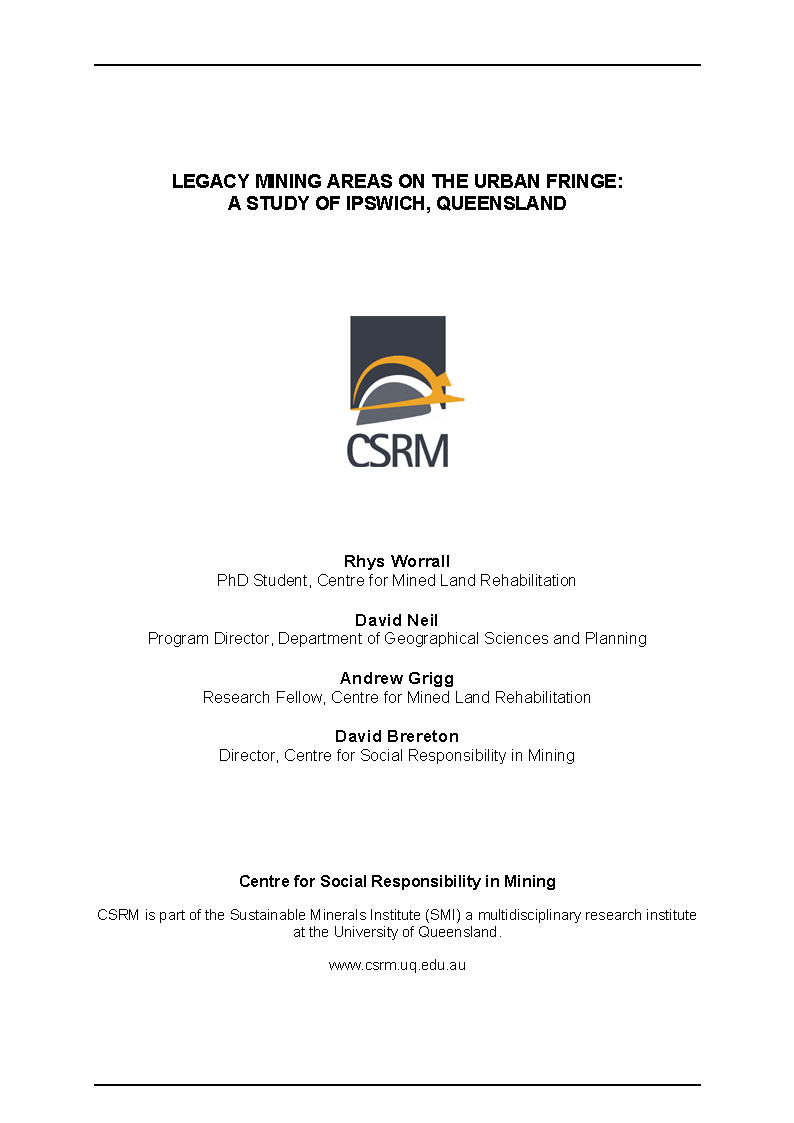Legacy mining areas on the urban fringe: a study of Ipswich, Queensland
The principles of sustainable development and land use planning are now widely accepted across the government and private sectors. However, the Australian mining industry has struggled with the translation of sustainable development rhetoric into on-the-ground practice. There are few accepted methodologies or approaches to resolving these oftenconflicting factors to achieve optimal outcomes. A number of existing case studies serve to illustrate the integration of social concerns and preferences into the decision-making process. However, these are relatively simple in terms of their context, post-mining land-use options and number of interest or 'stakeholder' groups. The situation becomes more complex when areas disturbed by mining activities are close to major, and expanding, centres of human population where strong and competing land use pressures exist. The legacy coal-mining areas adjacent to the growth area of Ipswich, located immediately to the southwest of Brisbane, represent just such a complex land management challenge. The purpose of this paper is to describe this area of legacy mined land, the current and likely future pressures it will face, and to discuss possible land management approaches that could be taken.
Publisher: JKMRC International Student Conference, Brisbane
CITATION
Worrall, R. et al. 2004. Legacy mining areas on the urban fringe: A study of Ipswich, Queensland. JKMRC International Student Conference, Brisbane

